When it comes to 50 cent coins, there is a wide range in both value and price. Most 50 cent coins are only worth their face value, which is fifty cents. However, there are some 50 cent coins that can be worth hundreds or even thousands of dollars like Flowing Hair Half Dollar, Seated Liberty Half Dollar, Bust Half Dollars or Barber Half dollars. The value of a 50 cent coin depends on a number of factors, including age, condition, series and rarity.
There’s something special about 50 cent coins. They’re big enough to be noticed, but small enough to be pocket change. They’re valuable, but not so valuable that you’d be heartbroken if you lost one.
The United States fifty-cent coin, also known as a half dollar or half for short, is the largest denomination of coin currently minted for circulation in terms of physical size, though not in value. If you have a few 50 cent coins lying around, you may be wondering just how much they are worth. In this blog post, we will take a look at the value of 50 cent coins and what you can do with them.
A Brief History of 50 Cent Coins
The fifty-cent coin has a long and storied history, dating back to the early days of the United States Mint. The Mint made the first half dollar in 1794 of silver. The obverse showed a woman, symbolizing liberty, while the reverse showed an eagle. The designs from 1794 to 1947 followed this same theme.
This design proved to be unpopular, and it was replaced in 1877 by the “Walking Liberty” half dollar designed by Adolph A. Weinman. This coin was produced until 1947, when it was replaced by the Benjamin Franklin half dollar. The Franklin half dollar featured an image of Benjamin Franklin on the obverse and the Liberty Bell on the reverse.
In 1964, the U.S. mint issued a new design for the half dollar coin. This new design was in honor of President John F. Kennedy, who had been assassinated the year before. The current design of the 50 cent coin is a continuation of the “Kennedy” theme with some minor changes. Today, the fifty-cent piece is still minted, although it is not widely circulated.
Rare 50 Cent Coins and Their Value
While a 50 cent coin might not seem like it would be worth very much, there are actually some rare 50 cent coins that are quite valuable. Below are three of the most valuable 50 cent coins:
Flowing Hair Half Dollar
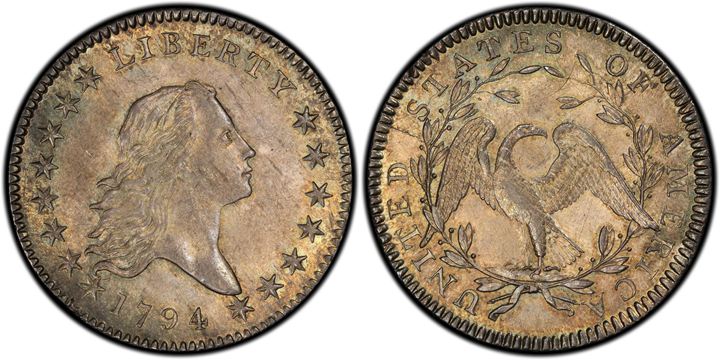
The Flowing Hair Half Dollar was the first type of half dollar ever struck by the United States Mint. The coins were minted in 1794 and 1795, and they feature a small head of Miss Liberty on the obverse side. The reverse side of the coin features an open wreath enclosing a small eagle. The coins are considered to be among the most beautiful and collectible of all American coins.
A total of 1,748 coins were produced, and just 140 to 150 are known to survive today. Due to their rarity, these coins are highly sought after by collectors. A Flowing Hair dollar in good condition can be worth tens of thousands of dollars. Uncirculated coins are even more valuable, with some examples selling for over a million dollars.
Bust Half Dollar
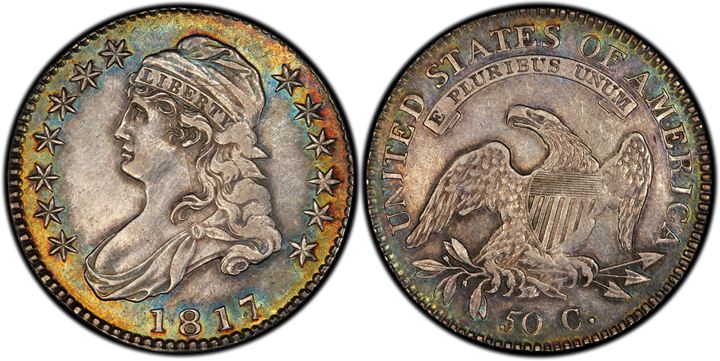
The Draped Bust half dollar was a silver coin produced by the United States Mint from 1796 to 1807. The design was created by engraver Robert Scot and featured a portrait of Liberty on the obverse and an eagle on the reverse. The coin was minted in three different varieties: the original heraldic eagle design, a modified design with stars on the reverse, and a “capped bust” variety with a portrait of Liberty wearing a ceremonial Phrygian cap.
The Draped Bust half dollar was eventually replaced by the Capped Bust design, which remained in production until 1839.
The price of a Bust Half Dollar can vary greatly depending on its condition, rarity, and age. Common examples in good condition can be bought for around $40, while more rare and well-preserved specimens can sell for over $30,000.
Seated Liberty Half Dollar
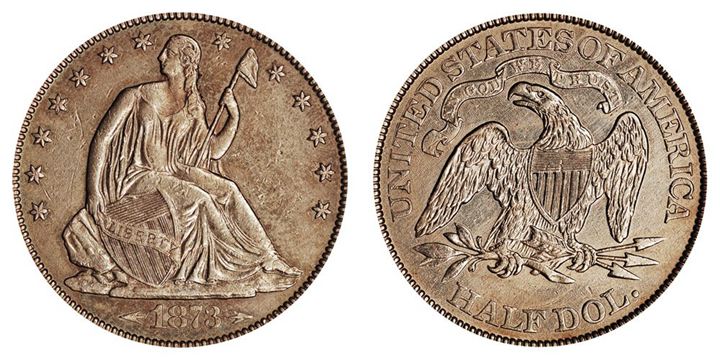
The Seated Liberty Half Dollar was one of the first coins to feature the now-iconic image of Lady Liberty. It was first minted in 1839 and was in circulation until 1891. The coin featured a seated Goddess of Liberty, hence the name. In her left hand, she holds a Liberty pole surmounted by a Phrygian cap. The coin’s reverse featured a bald eagle about to take flight, with a striped shield upon its breast. The eagle clutched an olive branch of peace in its right talons and a group of arrows in its left talons.
The coin was struck for a remarkably long time, and as a result, it is not difficult to find examples today. However, due to its age and the fact that it was circulated widely, few coins are in excellent condition. As a result, prices can vary widely, depending on the condition of the coin. A well-preserved example may sell for as much as $1,000, while a coin that has been heavily circulated may only be worth $20 or less.
Barber Half Dollar
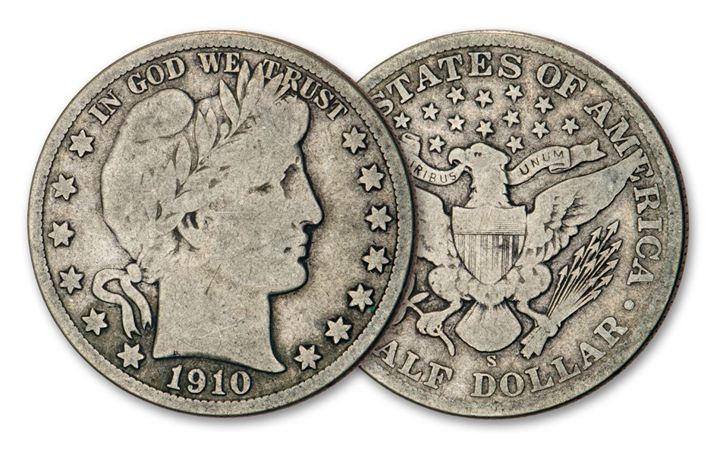
The Barber Half Dollar was minted from 1891 to 1915 and was designed by Chief Engraver of the U.S. Mint, Charles E. Barber. It is composed of 90 percent silver and 10 percent copper and has a mass of 12.50 grams and a diameter of 30.6 mm.
The Barber Half Dollar is a coin that was produced for a very short time and as a result, there are very few of them on the market today. The coin features a design that had never been used before. The obverse side of the coin features the head of Liberty and the reverse side features a heraldic eagle, based on the Great Seal of the United States.
While most Barber Half Dollars are in circulated condition, there are a limited number of coins that have been well preserved. These coins typically sell for around $400, while poor condition coins can be found for as little as $10. The difference in price is due to the fact that well-preserved coins are much rarer than poorly preserved ones.
Walking Liberty Half Dollar
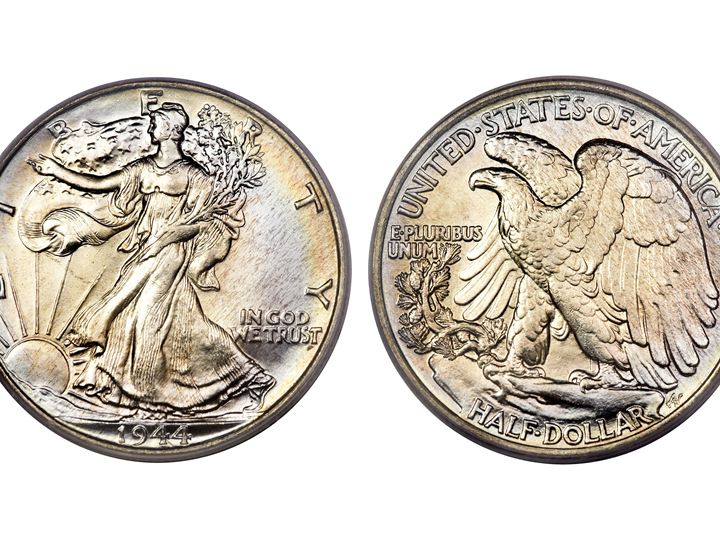
The Walking Liberty Half Dollar was first minted in 1916 and was in production until 1947. The coin was designed by Adolph A. Weinman and is considered to be one of the most beautiful coins ever minted. The coin is made of 90% silver and 10% copper and weighs 12.5 grams with a diameter of 30.63 mm. The coin has a reeded edge and is 1.8 mm thick.
The obverse of the coin features a full length figure of Liberty with her right hand extended and her left hand holding a laurel wreath and flowing flag. The date is below her along with the motto “In God We Trust”. The reverse of the coin depicts a bald eagle rising from a mountaintop perch and the motto “E Pluribus Unum” above. Below is the denomination “Half Dollar”. Despite its beauty, the Walking Liberty Half Dollar was only minted for a short time due to rising silver prices after World War II.
While circulated coins typically sell for $10 to $18 per piece, an uncirculated coin in Mint State-60 (MS/Proof-60) condition can command a price of $18,500 or more.
Franklin Half Dollar
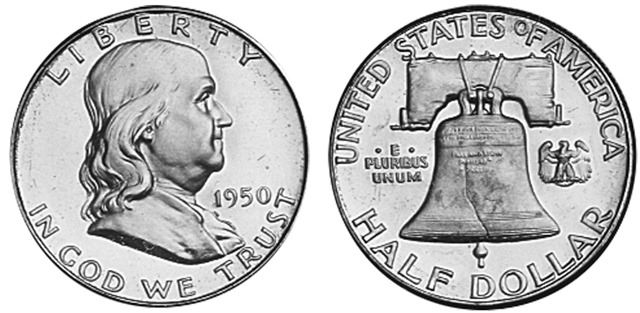
The Franklin Half Dollar was struck by the United States Mint from 1948 to 1963. The coin’s obverse features a portrait of Benjamin Franklin designed by John R. Sinnock, while the reverse depicts the Liberty bell designed by Sinnock and Gilroy Roberts. The coin was minted in Philadelphia, Denver, and San Francisco and was produced in both business strikes and proof strikes.
The coin is made of 90% silver, which makes it a popular choice among collectors. The coin’s historical significance and Franklin’s iconic profile make it a sought-after coin. In addition, the coin’s silver content makes it a valuable commodity.
The value of a Franklin Half Dollar depends on a number of factors, including the age, the rarity and condition of the coin. A 1949 coin, for example, might be valued at $15, while a 1961 coin in excellent condition with the doubled die reverse could be worth $3,000 or more.
Kennedy Half Dollar
The Kennedy Half Dollar was first minted in 1964, shortly after the assassination of President John F. Kennedy. The coin was originally composed of an outer layer of 80% silver and 20% copper. However, due to the high cost of silver, the coin was redesigned in 1970 to have an outer layer of 75% copper and 25% nickel.
The obverse of the coin depicts a left-profile portrait of John F. Kennedy, while the reverse features either a modified presidential seal or Independence Hall. There are four different mint marks: P, D, S. In 2014, a commemorative issue of the coin was minted with a “W” mint mark to commemorate the 50th anniversary of Kennedy’s assassination.
While most Kennedy half dollars are not worth much more than their face value due to them being common, there are some varieties that can reach high prices. For example, a 1965 half dollar graded MS 67 by the Professional Coin Grading Service sold for $9000. A half dollar from 1964 graded MS 68 sold for $12,500!
FAQ
How do I find the value of my 50 cent coin?
One of the best ways to get an accurate estimate is to compare your coin to ones that have recently been sold on eBay. By looking at the selling price of similar coins, you can get a good idea of what yours is worth.
What is a sequential half dollar?
A sequential half dollar is a commemorative silver half dollar issued by the United States mint for the 150th anniversary (1776 to 1926) of the signing of the Declaration of Independence. Its value today depends on its condition, but a coin in about uncirculated condition is worth around $75. However, if the coin is in mint condition, it can be worth more than $10,000.
What is the most expensive half dollar ever sold?
In 2019, a 1964 Kennedy Half Dollar sold for a world record $108,000 on Heritage Auctions. This surpassed the previous world record price of $47,000 for Kennedy half dollars. This particular half dollar coin was graded SP 67 by the PCGS.
How much silver is in a Kennedy half dollar silver coin?
In 1964, Kennedy silver half dollars were made from 90% silver and 10% copper. Half dollars made from 1965 through 1970 are composed of two outer layers containing 80% silver and 20% copper.
What makes the 1964 Kennedy half dollar valuable?
The 1964 Kennedy half dollar is a highly sought-after coin for two main reasons: its higher silver content and the sentimentality attached to it. When the coin was first minted in 1964, it contained 90% silver. However, the silver content was reduced to 80% in 1965 in order to save on production costs. As a result, the 1964 Kennedy half dollar is one of the last coins to be made with a high silver content.
In addition, the coin holds a great deal of sentimental value for many Americans. President John F. Kennedy was assassinated in 1963, and the release of the half dollar coin was postponed until 1964 as a mark of respect.
Final Thoughts
Most 50 cent coins are worth their face value, which is fifty cents. But some 50 cent coins can be worth more like hundreds or even thousands of dollars. The value of a 50 cent coin depends on things like how old it is, how good the condition is, what series it is from, and how rare it is. For example, a 50 cent coin from the early 1800s might be worth a lot more than a 50 cent coin from the 1990s because it is much older and rarer.
If you have a 50 cent coin that you think might be valuable, you can take it to a professional coin dealer to get it appraised. You can also look up the value of your coin online using an online coin price guide. Thanks for reading!
